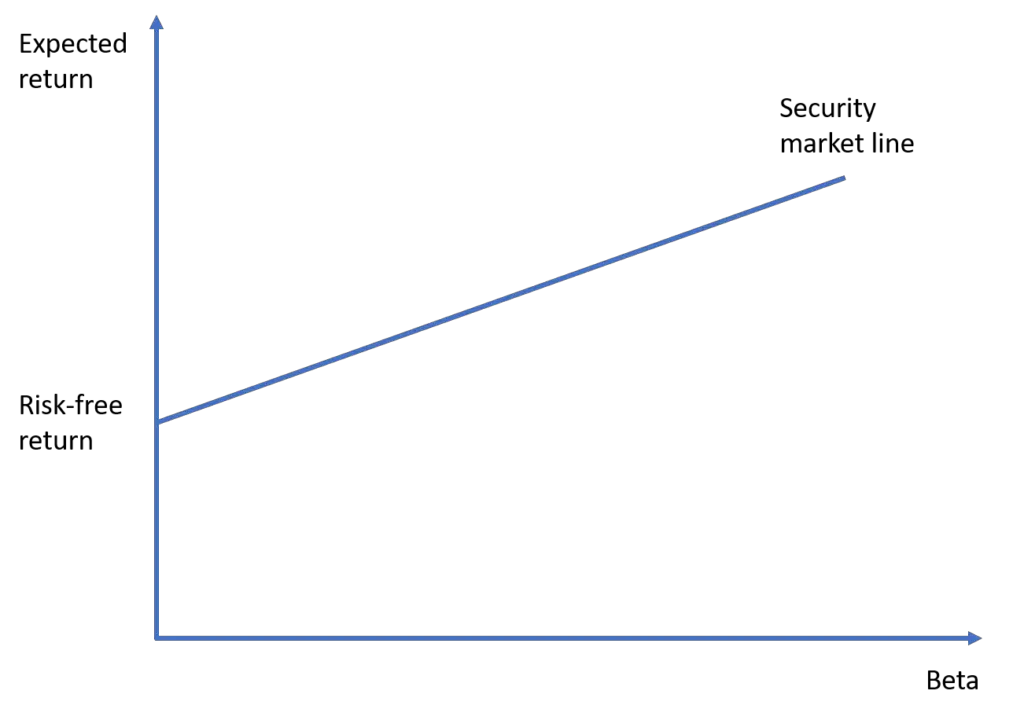On this page, we offer a glossary of investment terms, which includes brief descriptions of the terms that appear repeatedly in our posts. If there is a dedicated (or related) post on a particular term, we provide the link for that post as well.
Contents
A, B, C, D
Adjusted price: It is used for calculating stock returns and takes into account dividend payments and stock splits.
Annuity: It is a stream of cash flows that pays the same amount for a fixed number of periods (typically years).
Arbitrage opportunity: It is an opportunity to generate riskless profits without any need for using your own funds.
Ask price: The minimum price sellers would accept for a security. Also known as the “offer price”.
Beta: It is a measure of an asset’s sensitivity to market movements.
Bid price: The maximum price buyers are willing to pay for a security.

Capital asset pricing model: It is an asset pricing model that predicts a positive, linear relationship between an asset’s expected return and its beta.
Dividend yield: A stock’s dividend yield is equal to the dividend per share divided by the price per share.
E, F, G, H
Excess return: For a risky asset, it is the return that is in excess of the risk-free rate of return.
Fair bet: A type of bet that offers pure risk whereby the expected gain (or loss) is zero. It may be referred to as a fair lottery as well.
FTSE 100: A stock market index that consists of the 100 largest companies listed on the London Stock Exchange by market capitalization. For further info, visit londonstockexchange.com.
Gross return: It is the measure of return before subtracting the initial amount of investment.

Holding period return: It is the return an investor realizes on a specific investment over the entire investment period.
I, J, K, L
Initial public offering: It is the first time a firm sells its equity to the general public.

Inflation: It is the increase in prices observed over time. It drives a wedge between nominal returns and real returns.
Investment: An investment is a sacrifice of current consumption (e.g., saving) in order to boost future consumption.
Limit order: A trade order that is executed only if the price of the security reaches the level specified by the order.
Long position: An investor has a long position in a stock when she holds shares of the stock.
M, N, O, P
Market order: A trade order to buy or sell a security that is to be executed immediately at the current market price.

Net return: It is the measure of return after subtracting the initial amount of investment.
Nominal return: This is the rate of return before accounting for the loss of purchasing power caused by inflation.
Perpetuity: It is a stream of cash flows that pays the same amount indefinitely.
Q, R, S, T, U
Real return: This is the rate of return that is adjusted for the rate of inflation.
Return volatility: It is a measure of risk that is commonly calculated as the standard deviation of returns.
Risk-averse behavior: Such behavior implies a dislike for risk and is characterized by a tendency to refuse pure risks.
Risk-neutral behavior: Behavior that implies a general indifference about pure risks.
Risk-seeking behavior: In contrast to risk-averse behavior, risk-seeking behavior entails the pursuit of risk exhibited by a propensity to accept pure risks.

Risk premium: It is the return a risky asset is expected to generate above the risk-free rate of return.
S&P 500: A stock market index that consists of the 500 largest companies in the US equity markets by market capitalization. For further info, visit spglobal.com.
Sharpe ratio: A popular reward-to-risk ratio used to evaluate investment performance.
Short position: A short position is the mirror image of a long position. It implies short selling an asset.
Short selling: It is the act of selling a security that an investor doesn’t own with an obligation to buy the security back in the future.
Standard deviation: It is the square root of variance, and the standard deviation of returns is a measure of risk.
Stock exchange: It is a venue (New York Stock Exchange, Nasdaq, London Stock Exchange, Shanghai Stock Exchange, etc.) where shares of listed companies can be bought or sold.
Total return: In the context of stock returns, the total return is the sum of capital gains and dividend yield.
Trade order: An instruction to execute a specific trade. This should specify a number of things such as the order type (e.g., limit order), order size, etc.
V, W, X, Y, Z

Variance: It is the sum of squared deviations from the mean value of a distribution.
Weighted average cost of capital: This is the relevant cost of capital when both debt and equity are used for financing a project. It takes into account the tax shield of debt as well.

